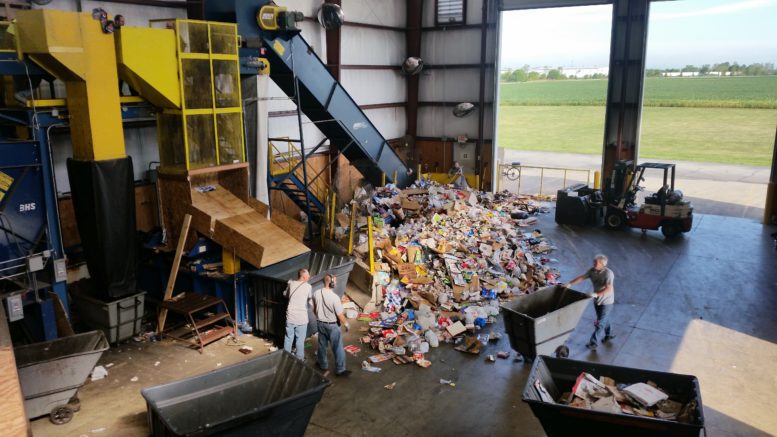By JAN LARSON McLAUGHLIN
BG Independent News
Bowling Green Recycling Center will no longer be handling the city’s curbside recycling after Dec. 31. The center, which has received Bowling Green’s recycling for 41 years, will continue to take drop-off items, but will no longer handle items collected curbside.
On Monday, City Council’s Committee of the Whole will discuss the future of recycling in the community at 6 p.m., in council chambers.
Then during the 7 p.m. regular meeting, City Council will review an ordinance allowing the municipal administrator to enter into a contract with Republic Services for curbside recycling. Due to the time crunch, council will hold two readings of the ordinance Monday evening, then likely pass it with an emergency clause at the Dec. 30 meeting.
Earlier this fall, Municipal Administrator Lori Tretter asked City Council to allow the administration to seek other bids to accept city recyclables. Council agreed. One proposal was submitted by Republic. The other, from BG Recycling Center, asked to no longer be involved in curbside efforts.
The request for proposals came after Bowling Green Recycling Center officials said they could no longer afford to operate the facility at the current rate from the city – and were losing money after changes experienced in the industry.
A combination of market changes, declining newspaper products, and China’s refusal to buy American recyclables has created an upheaval in recycling programs nationwide.
“We have a very long history with this,” Tretter said about the Bowling Green Recycling Center during a meeting of City Council’s Committee of the Whole in September.
“When the system was different, you made money from recyclables,” Tretter said. “It’s a very different story now.”
Citizens of Bowling Green have always been supportive of recycling. Last year 700 tons of recyclables were collected curbside, and another 1,000 tons were left at the drop-off location. So that makes it difficult to put the discussion in terms of dollars and cents, Tretter said.
“It’s really hard to get up here and talk about the economics of it,” she said.
But officials at the recycling center have told city officials that they cannot keep operating the facility at the current annual rate from the city.
“The markets are as low as they’ve ever been,” said Ken Rieman, chairman of the Bowling Green Recycling Center. “I haven’t seen it this bad in 40 years.”
That has resulted in the center facing a loss of $10,000 to $12,000 a month, Rieman said.
“We’re operating on reserves,” he said. “I don’t see it going back to the model where materials pay their way to market.”
Newspaper used to be the real money-maker in recycling, Rieman explained. In 2009, the center took in 1,000 tons of newspaper. It still brings in $100 a ton – but the amount of newspaper has shrunk down to about 300 tons this year. And if it’s mixed with magazines, its worth is cut to about $10 a ton.
“Newspaper is never coming back,” Rieman said.
“We’re at the mercy of what happens in the markets,” he said.
But the funding requested by the recycling center was a steep increase – from $80,000 to $215,000 a year.
Meanwhile, the markets have tanked, and recyclables are sitting on docks with no buyers.
Even Bowling Green’s Sustainability Coordinator Amanda Gamby, a self-described “glass half full” kind of person, is concerned.
“This is probably the worst I have seen it,” she said in September. The U.S. is at a “critical point” in its recycling. “I don’t think any of us can definitively stand here and say things are going to get better.”
Some communities are debating how much longer they can subsidize their recycling programs, Gamby said.

